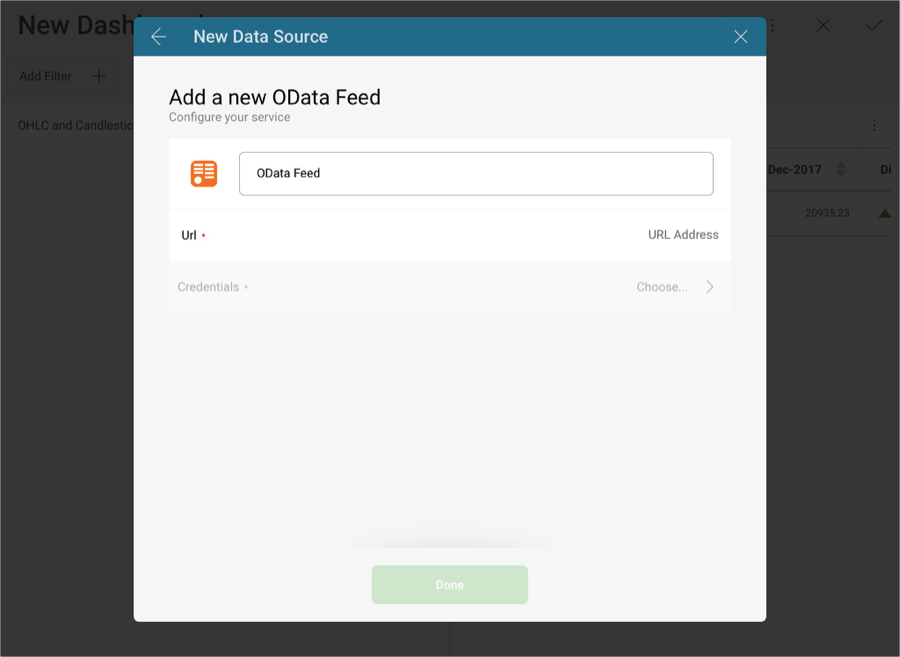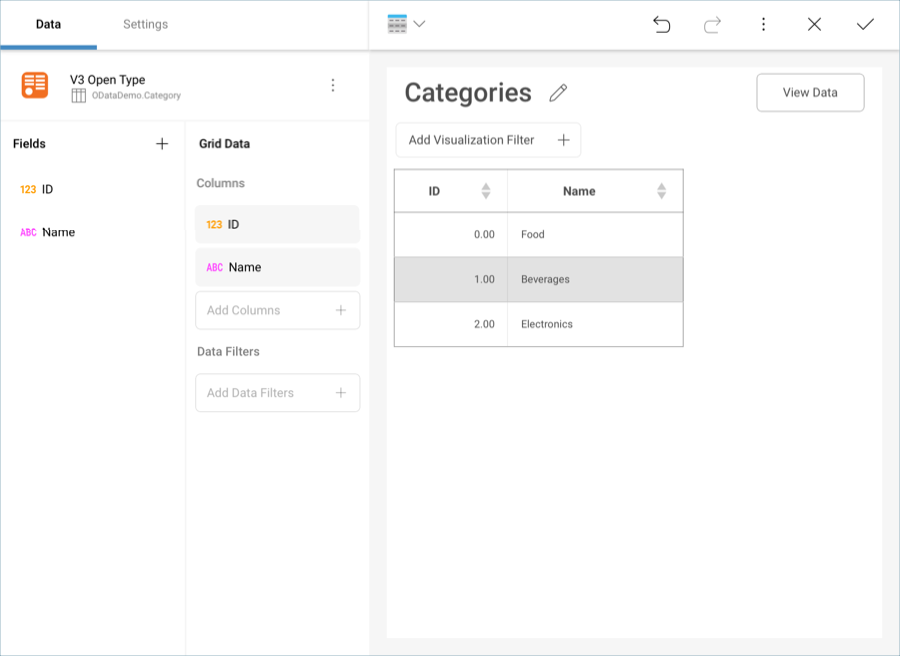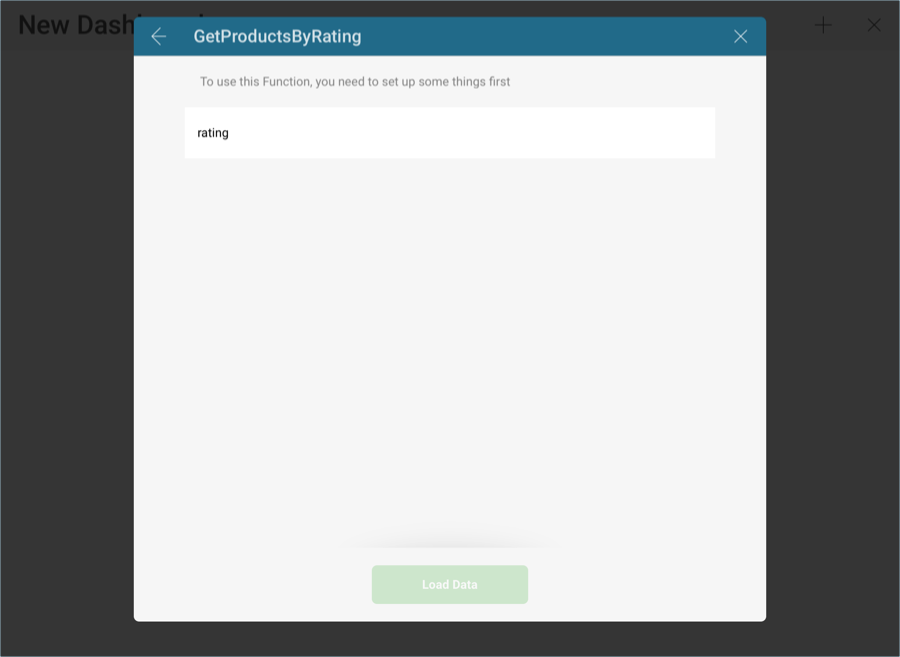
To configure an OData Service data source, you will need to enter the following information:

Data Source Name: this field will be displayed in the Data Sources list.
URL: the URL where the service is located (for example, http://services.odata.org/Northwind/Northwind.svc for the Northwind OData Test Service).
Credentials: after selecting Credentials, you will be able to enter the credentials for your OData Service or select existing ones if applicable.
Name: the name for your data source account. It will be displayed in the list of accounts in the previous dialog.
(Optional) Domain: the name of the domain, if applicable.
Username: the user account for the OData Service, if applicable.
Password: the password to access the OData Service, if applicable.
Once ready, select Create Account. You can verify whether the account is reaching the data source or not by selecting Test Connection.
To set up an OAuth 2 / OIDC account for a protected OData Service data source, please read this topic.
Reveal supports OData feeds with dynamic open type columns. After any changes to the dynamic OData feed, you only need to refresh the dashboard, and the new data will be picked up.
The following example is based on one of the dynamic OData samples. A visualization was created initially, which had two fields (ID and Name) with three categories.

A few records were added to the Categories section through Postman. After the changes, the dashboard was refreshed to display the new records.

For more information on Open Types in OData, refer to this article.
Any functions you have configured to be exposed by an OData service will appear in the Visualization Data menu for your data source under the Functions tab.

Depending on your function, you might need to enter one or more values to get your data. The V3 OData sample includes the following sample function, where you have to enter a rating value to get results.

Once ready, the Visualizations Editor will load the fields in the data source which meet the function condition.

For more information on OData functions, please refer to this article.